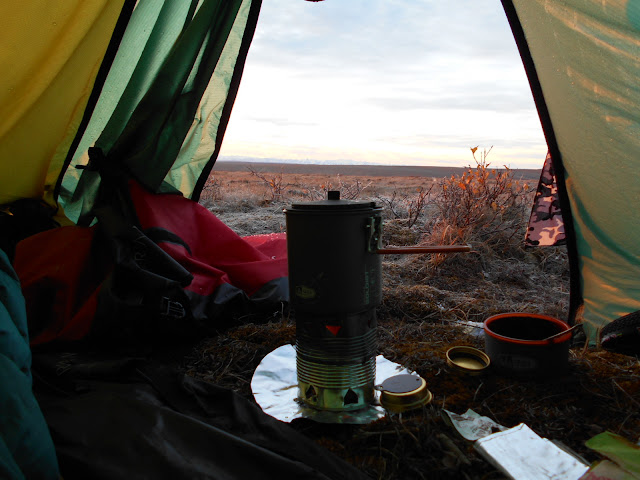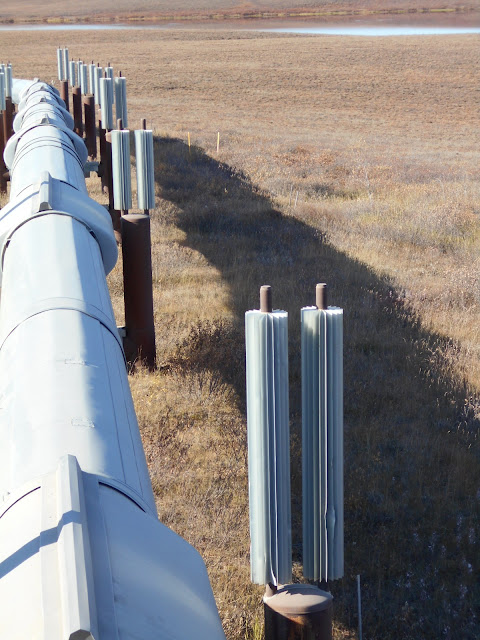Day Two dawned crisp and frosty, but clear. My snug little tent, a lightweight single hoop design from Sweden, was quite cozy. The alcohol stove burned nicely, using the automotive gas additive HEET that I had purchased in Prudhoe Bay. With no moving parts on this stove, there was nothing to fail nor heavy spares to carry. I did however forget to pack the pot support/windscreen from home. So in Fairbanks I had modified a peach can into a pot support. Punching out both ends with a can opener and adding combustion vent holes, it worked perfectly. Plus those peaches had tasted great too!
The day unfolded as one of gently rolling hills and modest grades. I was still breaking in my body and so far the route was cooperating. Every so often I'd see a pickup truck parked by the side of the road as this was caribou hunting season. Rifle hunters must not hunt within 5 miles of either side of the road and bow hunters 2.5 miles. This is to protect the caribou, as this road bisects their traditional breeding grounds. So a hunter has a real trek in front of them to get to the caribou, across the very uneven tundra. It is a real knee wreaking experience tramping through the tundra. I'd say the caribou have the advantage mostly. With no trees and open rolling terrain, they can spot any predator or hunter at a great distance. I chatted to several hunters throughout the day and only met one that had had any success. And that was a gal bow hunter no less!
I had been paralleling the pipeline thus far, sometimes at quite a distance and finally it crossed the road for the first time. Built above ground in this area due to the frozen permafrost below. A good portion of the pipeline is underground further down South, but here it is above ground. To keep the support stanchions from heating up from the sun and melting the permafrost below, they are cooled by a interesting radiator design. Each post has refrigerant running from it's base back up to fins at the top. A natural non-mechanical gravity heat pump system occurs. The warm liquid rises up to the fins, radiates and cools, sinks again to the base and draws any heat from the stanchion and rises again to cool above in the radiator fins. A smart design and no cost or pollution to run. A pretty forward thinking design, back in 1970's, when it was installed.
It was an ideal day for arctic cycling, temperatures had climbed up to the low 40's. The looming mountains were exciting to see growing taller and taller with each pedal stroke. Finally Pump Station 3 drew into view and I stopped at a nice river for a campsite. Although next to the road, there was fresh water and lovely boulders to sit on.
The day had been perfect, my body adjusting well, but tomorrow would bring me into striking distance for the steep Atigun Pass. There was much still ahead to think about!











No comments:
Post a Comment